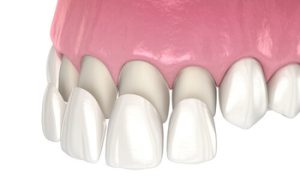Have you ever looked in the mirror and wished for a brighter, straighter, more radiant smile? You’re not alone. Many Australians are turning to cosmetic dentistry to transform their appearance and boost their confidence; porcelain veneers are one of the most popular options. But there’s one big question on everyone’s mind: How much do porcelain veneers cost?
In this guide, we’ll explain everything you need to know about the cost of porcelain veneers, how they compare to composite veneers, what factors affect pricing, and what you can expect from the porcelain veneers process. Whether considering a smile makeover or just exploring your treatment options, this article covers you.
Let’s Start with the Basics: What Are Porcelain Veneers?
Porcelain veneers are ultra-thin, custom-made shells designed to cover the front surface of your natural teeth. They’re crafted from high-quality porcelain in a dental lab and bonded to prepared teeth by a skilled cosmetic dentist. The result? A durable, natural-looking smile that can dramatically enhance your appearance.
Veneers can be used to correct:
- Discoloured or stained teeth (even after teeth whitening has failed)
- Chipped, cracked, or broken teeth
- Uneven or misshapen teeth
- Gaps between teeth
- Minor alignment issues
Porcelain Veneers vs Composite Veneers: What’s the Difference?
If you’re thinking about transforming your smile, one of the first choices you’ll need to make is whether to get porcelain veneers or composite veneers. Both are popular options in cosmetic dentistry and can achieve impressive results, though they require very different approaches.
Let’s compare them so you can decide what’s right for your smile, budget, and lifestyle.
What They’re Made From
Composite veneers, on the other hand, are made from a tooth-coloured composite material. Instead of being created in a lab, they’re applied directly onto your teeth and sculpted by your dentist during your appointment. While modern composites have come a long way, they still don’t offer quite the same depth or translucency as porcelain.
The Procedure
Porcelain veneers usually involve multiple dental visits to complete the treatment process. During the initial appointment, your dentist gently removes a thin layer of tooth enamel, known as tooth preparation, to make room for the veneers. They’ll then take impressions, which are sent to a lab where your custom-made shells are designed. While you wait, you’ll be fitted with temporary veneers to protect your prepared teeth.
Composite veneers are typically completed in a single visit. Your cosmetic dentist will layer and shape the resin directly onto your existing teeth, then harden it with a special light. Because there’s usually less tooth preparation involved, some patients prefer it as a less invasive option.
Longevity and Durability
Porcelain veneers are well known for their strength and ability to deliver long-lasting results. With the right care, they can remain in ideal condition for ten to fifteen years or even longer. They’re resistant to chips, cracks, and stains, making them a long-term solution that holds up well over time.
Composite veneers don’t last quite as long. They generally hold up for around four to eight years and are more prone to staining and minor damage. However, the good news is they’re easier and cheaper to repair than porcelain, which typically needs to be replaced if damaged.
Cost Comparison
Porcelain veneers represent a considerable investment in enhancing your smile. In Australia, the starting cost is typically around $1,200 per tooth. The higher cost accounts for the premium materials used, the custom craftsmanship in the dental lab, and the skill and time invested by your cosmetic dentist.
Composite veneers, on the other hand, are more affordable, starting at about $450 per tooth. They’re a great option if you want to improve your smile on a smaller budget or if you’re looking for a temporary solution before committing to porcelain.
Appearance and Aesthetic Results
If you’re aiming for a natural-looking smile that could be straight out of a magazine, porcelain veneers tend to win in the looks department. They offer a more translucent, lifelike finish that closely resembles natural teeth. Many patients who opt for a full smile makeover choose porcelain for this reason.
That said, composite veneers can still offer beautiful results, especially in the hands of an experienced cosmetic dentist. They can be a great fit for minor tweaks or subtle reshaping.
Repair and Maintenance
If you chip or crack a porcelain veneer, it will likely need to be replaced. Composite veneers are a bit more forgiving; they can often be repaired or reshaped in a single visit.
No matter which type you choose, the key to making them last is good oral hygiene, avoiding hard or sticky foods, and keeping up with your regular dental check ups.
So, Which Veneer Type Is Right for You?
Choosing between porcelain and composite veneers comes down to your goals, your timeline, and your budget.
If you want something more affordable, quicker, or reversible, composite might be a better choice, especially for smaller cosmetic touch-ups or younger patients still deciding on a long-term dental treatment plan.
Ultimately, whether you choose porcelain or composite veneers, your smile should be a true reflection of you: confident, radiant, and uniquely yours.
A Closer Look: What the Porcelain Veneers Process Typically Involves
Wondering what the porcelain veneer treatment actually looks like? The process of getting porcelain veneers typically involves two to three appointments. Here’s a simplified breakdown:
1. Consultation and Treatment Planning
Your journey begins with a visit to a dental professional or cosmetic dentist, who will evaluate your existing teeth, talk through your smile goals, and develop a customised treatment plan designed just for you.
2. Tooth Preparation
Next, a small amount of tooth enamel is removed to make space for the dental veneers. This step is essential for ensuring your veneers look natural and sit flush with surrounding teeth.
3. Impressions and Temporary Veneers
Impressions of your prepared teeth are taken and delivered to a dental lab where your custom-made shells are created. In the meantime, your dentist may place temporary veneers.
4. Veneers Applied
Once your high-quality veneers are ready, your dentist will check their fit and appearance. Adjustments are made as needed before placing porcelain veneers with strong dental adhesive.
5. Final Polish and Care Instructions
You’ll leave the clinic with a fresh, stunning smile and instructions on proper care and maintenance.
What Other Costs Should You Consider?
Beyond the veneers themselves, there may be additional costs depending on your dental needs:
- Initial consultations
- Diagnostic X-rays or digital scans
- Teeth whitening (if blending veneers with surrounding teeth is required)
- Dental bonding or tooth fillings to improve structure
- Retainers or nightguards (to protect veneers from grinding)
- Regular dental checkups to keep an eye on your dental health
Porcelain Veneers vs Dental Crowns: What Sets Them Apart?
Although both porcelain veneers and dental crowns can boost the appearance and function of your teeth, they are designed for different purposes and involve unique treatment processes. Porcelain veneers are thin, custom-made shells that cover only the front surface of a tooth, ideal for improving cosmetic issues like discolouration, chips or minor misalignment. In contrast, dental crowns encase the entire tooth, offering greater protection and strength, especially for teeth that are heavily decayed, cracked or have undergone root canal treatment. Choosing between the two often depends on the extent of the damage and the goal of the treatment, whether it’s purely aesthetic or also restorative.
Porcelain Veneers: Sydney Shines, Is It Worth Travelling for Veneers?
Porcelain veneers in Sydney are known for exceptional quality and access to some of the country’s most experienced cosmetic dentists. However, this also means the veneer cost in Sydney is often higher. If you’re from a regional area, it may be worth making the trip, especially for a complex or full smile makeover.
Some clinics also work with local or overseas technicians. Always check whether your custom made shells are crafted locally, as high quality veneers often come from Australian dental labs, ensuring quicker turnaround and better quality control.
Is a Smile Makeover Worth the Investment?
Absolutely, when done right. A complete veneer makeover not only enhances your natural-looking smile but also supports your oral health, helps protect tooth structure, and reduces the need for more invasive dental procedures later on.
Many patients say the boost in confidence and the ability to smile freely is priceless. It’s one of the most transformative cosmetic dental solutions that can truly be life-changing.
Financing Options: Making Porcelain Veneers More Accessible
Let’s face it, veneers cost can be significant. Fortunately, many dental clinics offer flexible payment plans, allowing you to pay off your porcelain veneer treatment over time.
Speak with your dental professional about the following options that can help make porcelain veneers more accessible and manageable:
- Interest-free financing: Many dental clinics offer flexible payment plans that allow you to spread the cost of your treatment over time without added interest.
- Early-release superannuation for eligible patients: If you qualify, you may be able to access your superannuation funds early to cover essential dental treatments through programs like SuperCare.
- National Dental Plan: This option allows you to start treatment straight away and pay it off in instalments, making it easier to manage the financial side of your smile makeover.
Your dentist may also be able to suggest other customised financial solutions based on your individual circumstances and treatment plan. Be sure to ask what’s available at your clinic; it’s often more flexible than you’d expect.
Keeping Your Porcelain Veneers Beautiful: Aftercare Tips
You’ve invested in a dream smile, so how do you keep it looking flawless? Here are a few essential tips for proper care and maintenance:
- Brush your teeth twice a day using a soft-bristled toothbrush and a non-abrasive toothpaste to protect your veneers.
- Floss daily to protect your tooth enamel and gum health
- Avoid biting into hard foods with veneers (ice, hard lollies, etc.)
- Wear a customised nightguard if you tend to grind your teeth
- Schedule regular dental checkups with your dentist
With proper oral hygiene and routine dental visits, porcelain veneers can endure over a decade while maintaining their shine and structure.
Are Porcelain Veneers Right for Everyone?
- You have untreated gum disease or severe tooth decay
- You grind your teeth excessively
- Your existing teeth are extremely weak or damaged
- Do you prefer a reversible or more affordable solution (like composite veneers or teeth whitening)
Your experienced dentist will guide you through alternative treatment options to make an informed decision based on your oral and financial health.
Final Thoughts: The True Value of Porcelain Veneers
Yes, the porcelain veneer cost can feel like a big leap, but when you consider the years of confidence, elegance, and self-assurance that follow, many would say it’s worth every cent. Whether you’re after a single veneer or a full set of custom-made veneers, you’re investing in more than just aesthetics, you’re investing in yourself.
So, are you ready for your transformation?
Your Dream Smile Starts with a Consultation
If you’re curious about your own smile potential, the best next step is to schedule an appointment with Dr Jack at (02) 8806 3712 and (02) 9000 1778 today to evaluate your teeth, listen to your goals, and walk you through a customised treatment plan that fits your needs and budget. Begin your journey toward a stunning white smile with safe and effective results.
Note: Any surgical or invasive procedure carries risks. Before proceeding, you should seek a second opinion from an appropriately qualified health practitioner.
References
- WebMD. (n.d.). Dental crowns. WebMD. https://www.webmd.com/oral-health/dental-crowns
- Cleveland Clinic. (n.d.). Dental veneers. https://my.clevelandclinic.org/health/treatments/23522-dental-veneers
- Healthline. (n.d.). Composite veneers: Benefits, procedure, cost, and more. https://www.healthline.com/health/composite-veneers
- National Dental Plan. (n.d.). Home. https://www.nationaldentalplan.com.au/
- Colgate. (n.d.). What is good oral hygiene? https://www.colgate.com/en-us/oral-health/adult-oral-care/what-is-good-oral-hygiene#












